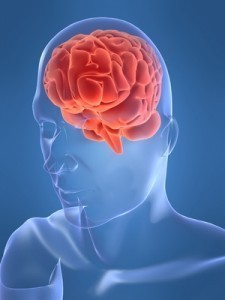How Big is the Brain
Just like the heart, liver and other human organs, the brain is also a highly important part of the body.  This highly complex organ is the central part of the nervous system. It serves a variety of functions including abstract thought, reasoning and planning. Because it is sensitive, this part is subject to a number of different diseases including multiple sclerosis as well as Parkinson’s disease. In addition to all these interesting details, it is also good to know the size of the brain.
This highly complex organ is the central part of the nervous system. It serves a variety of functions including abstract thought, reasoning and planning. Because it is sensitive, this part is subject to a number of different diseases including multiple sclerosis as well as Parkinson’s disease. In addition to all these interesting details, it is also good to know the size of the brain.
The Size of the Brain
How big is the brain? In adults, the average size of the brain is somewhere about 1,260 cubic centimeters in men and more or less 1,130 cubic centimeters in women. Of course, the actual size of the brain varies depending on the individual. In terms of weight, the adult brain measures around 1.5 kilograms or 3 pounds. In terms of texture, it is very soft, which is very much similar to that of tofu. By the age of 20 years old, the myelinated axons in the brains of women are estimated to be around 149,000 kilometers. On the other hand, men usually have 176,000 kilometers by that age.
Additional Facts and Other
Because of the highly sensitive and delicate structure of the brain, it is susceptible to different kinds of diseases and disorders. For years, neurodegenerative diseases continue to inflict pain and suffering to patients including Huntington’s disease, Parkinson’s disease as well as Alzheimer’s disease. Furthermore, a variety of factors can also lead to mental disorders like post-traumatic stress disorder, schizophrenia and clinical depression. The usual treatments for these medical conditions include social intervention and psychotherapy.
Just like the rest of the other parts of the human body, bacteria and viruses can also affect the human brain. Some of the most popular forms of diseases caused by these factors are bovine spongiform encephalopathy and meningitis.
Many different ways can be used to diagnose the condition of the brain. One of the most popular techniques available today is electroencephalography, which is commonly referred to as EEG. Another one is magnetoencephalography or MEG, which is used mainly to measure the magnetic field around the skull. Aside from these two methods, medical experts now use the so-called functional magnetic resonance imaging. Many patients and doctors want to use this particular method because there is no radioactivity involved in the process.
Furthermore, the brain is subject to damage, which can be caused by a number of different factors. One of the leading causes of damage to the brain is stroke, a condition wherein the brain does not receive enough supply of blood.





